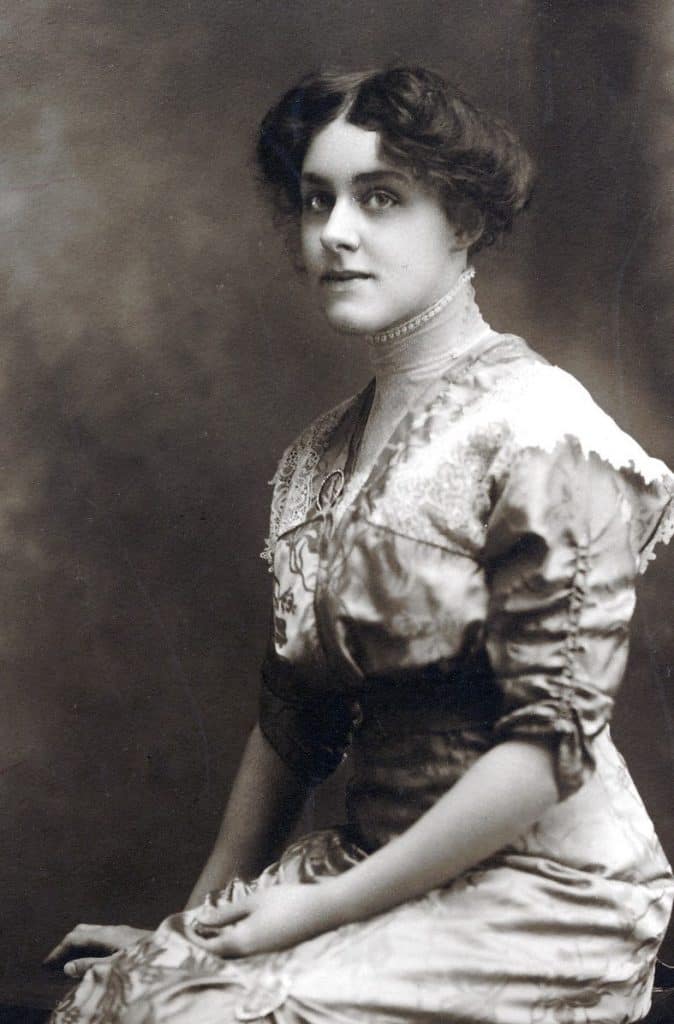One hundred years ago in August 1920, the 19th Amendment was adopted and certified. The Amendment prohibits the states and the federal government from denying the right to vote to citizens of the United States based on sex. It was a decades long and hard-fought battle by many women that won the right to vote. Although Tennessee became the 36th state to ratify the Amendment making it law, it wasn’t until 1971, more than 50 years later that North Carolina became the last state to ratify the amendment.
Many of you will have used a draft, read a monograph, or heard a presentation about Mary Meigs Atwater. She was named the “Dean of Handweaving” by Handwoven Magazine editors and others. Did you know she was also a suffragist?
We cannot know what made her become a suffragist. Perhaps it was her observation of the hard-working women around her in the mining communities of Montana that lead her to believe that women should have the same right to determine self-governance as men. Although there is no record of her thoughts, by her actions it is clear she did.
Atwater and other women in Montana communities raised funds to support Jeanette Rankin in her work for women’s suffrage. In 1911, Rankin became the first woman to speak about women’s suffrage before the Montana legislature. Years later, in 1914, a women’s suffrage referendum was adopted by the Montana Legislature. Atwater quickly joined the effort to elect Rankin as the first female member of the House of Representatives. Elected in 1916, she introduced the legislation that would become the 19th Amendment.
Although it is an especially important aspect of Atwater’s life, women’s suffrage was only small part of it. She collected weaving drafts, taught, and wrote about weaving and almost single-handedly revived handweaving in America. Handweaver and Craftsman called her “the grand dame and grandmother” of weaving rebirth in the United States.
She organized the Shuttle Craft Guild and began the Shuttle Craft Bulletin in September 1924. The first issue begins, “It gives me great pleasure to greet you through the medium of our first bulletin. It is my hope that this monthly letter will serve to keep us all in touch…” In the last Bulletin of December 1945, she urges her members to write to their Congressmen and Senators to “ease the problems of supplies,” which became very scarce for handweavers during the war.
Ever the activist, Atwater spent her life teaching, writing and actively encouraging women to be creative, self-supporting, and aware of the political realm that impacts all of our lives today as well as in the years of the suffrage movement in the United States.
Some of your mothers and grandmothers were probably active as suffragists or in one of the groups that supported women’s suffrage. According to family lore, my Grandmother Ethel Douce Reeder, was an active member of the Women’s Christian Temperance Union, (WCTU). Temperance was not their only focus of activity. It included labor laws, child welfare laws, age of consent, prison reform, and others.
In 1881 the Union endorsed women’s suffrage. WCTU members were the grass roots of the suffrage movement. They sponsored suffrage speakers and conveyed information about the suffrage movement to their communities.

No matter what your thoughts on the upcoming election or your political affiliation, I hope you will honor the women who worked so hard to give you the right to vote. Please…

Resources
Resources: Shuttle Craft Bulletins can be researched or downloaded here: https://www.handweaving.net. A $25 annual subscription provides access to myriad documents and weaving drafts including WIF files.
The Mary Meigs Atwater Weaver’s Guild of Utah has a CD of her Recipe Book: Patterns for Handweavers, that includes WIF files of all the drafts. Here is the link: http://www.mmawg.org/
